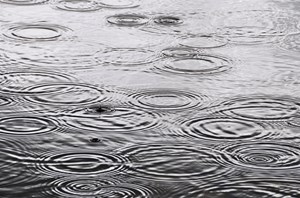Scientists Launch Effort to Collect Water Data in US West
FLAGSTAFF, Ariz. (AP) — The U.S. Department of Energy on Aug. 24 announced a new kind of climate observatory near the headwaters of the Colorado River that will help scientists better predict rain and snowfall in the U.S. West and determine how much of it will flow through the region.
The multimillion-dollar effort led by Lawrence Berkeley National Laboratory launches next week. The team has set up radar systems, balloons, cameras and other equipment in an area of Colorado where much of the water in the river originates as snow. More than 40 million people depend on the Colorado River.
Alejandro Flores, an associate professor of hydrology at Boise State University, said the weather in mountainous areas is notoriously difficult to model and the observatory will be a “game changer.”
“We have to think about the land and the atmosphere as a linked system that interact with each other,” he said in a call with reporters. “Up until now, there have been a lack of observations that help us understand this critical interface.”
The West is in the midst of a more than 20-year megadrought that studies link to human-caused climate change. That, along with increased demand on the Colorado River led to the first-ever shortage declaration in August, and there’s an increasing threat of deeper, more widespread water cuts. Arizona, Nevada and Mexico won’t get their full allocations of river water next year.
Scientists will use the observatory to gather data on precipitation, wind, clouds, tiny particles, humidity, soil moisture and other things. Along with a better understanding of the hydrology, they hope to learn more about how wildfires, forest management, drought and tree-killing bugs, for example, play a part in water availability.
A big issue in predicting water supply in the West centers on soil moisture and content, said Ken Williams, the lead on-site researcher and Berkeley Lab scientist. The monsoon season largely was a dud across the Southwest for the past two years, which means more melting snow soaks into the ground before reaching streams and rivers when it does rain, he said.
Climate experts said during a separate briefing Tuesday that southern Arizona and parts of New Mexico have seen impressive rainfall totals so far this monsoon season, with Tucson marking its wettest July on record. Mike Crimmins, a professor at the University of Arizona, called it an “amazing reversal” for the desert city.
Some parts of the Southwest have seen as much as four times their normal precipitation levels. But Crimmins noted other spots like Albuquerque, New Mexico, are either at average levels or still lagging.
“We have both really wet conditions for the short term, but we also have longer-term drought still hanging out there because we have these longer-term deficits that we cannot solve with just one or two or even three months of precipitation,” he said.
To reverse the longer-term trends, the region would need to see back-to-back wet winters and summers that are hard to come by, Crimmins said.
The new climate observatory, called the Surface Atmosphere Integrated Field Laboratory, brings together federal scientists, university researchers and others to build on a previous effort to study part of the upper Gunnison River basin in Colorado that shares characteristics with the Rocky Mountains.
For the Rio Grande basin, the data could help water managers as they juggle longstanding water sharing agreements among Colorado, New Mexico, Texas and Mexico, Williams said. It also could help improve weather forecasting and experiments to modify the weather, such as cloud seeding to produce more precipitation.
The data will be available to other researchers and provide a benchmark for any collection beyond the two-year project, scientists said.
Related News
From Archive

- Glenfarne Alaska LNG targets late-2026 construction start for 807-mile pipeline project
- U.S. water reuse boom to fuel $47 billion in infrastructure spending through 2035
- $2.3 billion approved to construct 236-mile Texas-to-Gulf gas pipeline
- Major water pipe break in Puerto Rico hits over 165,000 customers
- Potomac River Tunnel project enters construction phase beneath Washington, D.C.
- Pennsylvania American Water launches interactive map to identify, replace lead water service lines
- Trump's tariffs drive $33 million cost increase for Cincinnati sewer project
- Utah city launches historic $70 million tunnel project using box jacking under active rail line
- Tulsa residents warned after sewer lines damaged by boring work
- Fatal trench collapse halts sewer construction in Massachusetts; two workers hospitalized




Comments